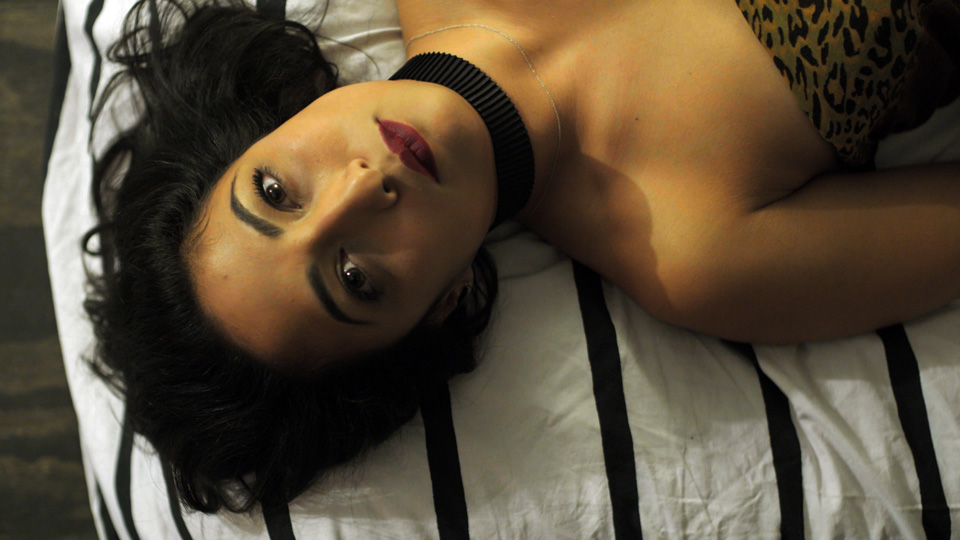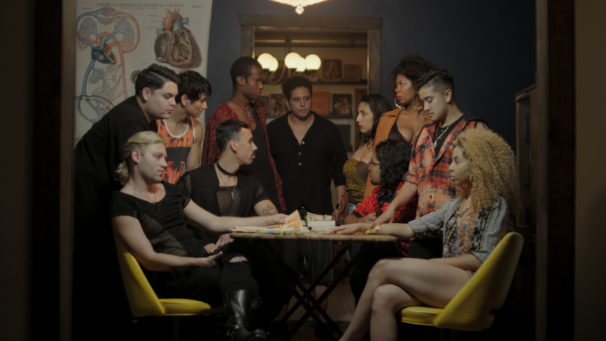
CHICAGO—Last Thursday, November 9, The National Museum of Mexican Art hosted a special screening of the second and third installment of Brujos season 1. The independently created web series follows a group of Queer, predominantly Latinx, graduate students as they learn to navigate their newly acquired superhuman abilities. The crew refer to themselves as “brujos,” which translates to the plural (using the masculine) form of “witch” in Spanish: The entirety of the cast ranges across all gender spectrums.
The mastermind behind Brujos, Ricardo Gamboa, is a Queer Latinx Chicago artist. He is also the conceiver and host for “The Hoodoisie,” a live bi-weekly podcast that aims to deliver radically politicized takes on news and current events. In addition to his community work, Gamboa is the artistic inspiration behind the magic: He wrote, directed, and starred in the series as Panfilo, a brujo with the powers of telekinesis. Alongside his co-directors, Reshmi Hazra Rustebakke and Robert Stockwell, Gamboa has taken Brujos to new levels of divination.
The first four episodes were released last May through Open TV (beta), a Chicago-based platform for queer and intersectional television. Open TV has help launch other popular web series, such as the critically acclaimed Brown Girls, which was recently acquired by the HBO network. Upon its debut, Brujos was met with much praise and and recognition for its ability to explore the critical themes of colonialism and racial power structures through a lens of modernized hegemony.
The foundational backstory and main cast were introduced in episodes 1-4. The primary Brujos gang consists of four individuals—Edwin (Justin Ignatius Mitchell), Jonathan (Isaac Gomez), Brian (Jake Szczepaniak), and Panfilo (Ricardo Gamboa)—as they battle against the “wealthy descendants of the first world colonizers” that belong to a secret society called the “Scientist.”
It comes as no surprise that villains of the series are a clear allegory for the white, cisgender, heteronormative framework of power in our society. Gamboa has been publicly critical of white supremacy on various social media platforms, and has utilized Brujos as a means of creating discourse around the rising popularity of “alt-right” ideology in the Trump era. So many of the barriers that the brujos face on the show are not simply about combating the real threat of death, but also surviving in a world where their intelligence and abilities are barely recognized. Gamboa has previously joked that while many consider the series fantasy fiction, he sees it as a “documentary.”
The second and third installments introduce a whole new plethora of talent. Monet (played by actress Arti Ishak) is the newest addition and standout bruja of the pack. The inclusion of more femme characters is a welcome change in pace, and allows the show to evolve into a more nuanced critique of the way in which white supremacy affects all facets of marginalization.
Among some of the more notable talent aboard, Sean Parris does a brilliant job in his portrayal of Coco. Coco is sought out by Panfilo, who hopes to recruit the mysterious performer for the group’s showdown against the Scientist. Parris’s talent and versatility as an actor are worth noting, as he steals the show with the intensity and understated grace of his performance.
Other introductions to the coven include Ryan (James Park), Selene (Mia Vivens), Vasquez (Avi Roque), Ahmet (Masood Haque), and Tammy (Quenna Barrett), a captivating and diverse lineup of performers who display a variety of magical abilities and talent. Gamboa’s writing makes room for a number of compelling standout performances and allows each of the young actors to thrive in the raw authenticity of the cast’s natural chemistry.
The lead villain of the series, Adam Smythe (Aaron Rustebakke), is a chillingly accurate portrait of the predatory agency white men hold under capitalism. Rustebakke plays a Scientist who feeds on the flesh of brown children—a glaring reminder of society’s willingness to dispose of black and brown youth (Tamir Rice, Jordan Edwards, Aiyana Jones, etc.).
The Scientist’s “witch hunt” of the brujos is a blatant metaphor for the institutional oppression that Queer black and brown people face. Rustebakke’s performance is not only plausibly terrifying, but also leaves the audience with a lingering sense of dread. Smythe is, for all intents and purposes, the threat of violence that Queer people of color face every single day.
Brujos also takes the time to articulate the more “human” concerns that the coven routinely faces; Edwin’s exploration of sexual intimacy, Jonathan’s difficulties living up the expectations placed upon him as a Latino in academia. These are narratives that prevail for marginalized people, and continue to shape the way we navigate our existing realities.
Brujos helps fill in an urgent need for representation, especially with so many of the most celebrated LGBTQ shows being dominated by cis white faces (The L Word, Will & Grace, etc.). The series is unapologetic and callous in its critique of hegemonic power. It is also an empowering portrayal of love, resilience, growth and strength. For queer brown kids who spent their childhood projecting themselves onto white TV characters, Brujos is the long awaited squad of heroes we have all been waiting for.
Full Brujos Season 1 will be available online November 20.
Editor’s note: The cast is still looking to fill a $25,000 cost gap and is currently crowdfunding to finish paying off for the cost of production.







